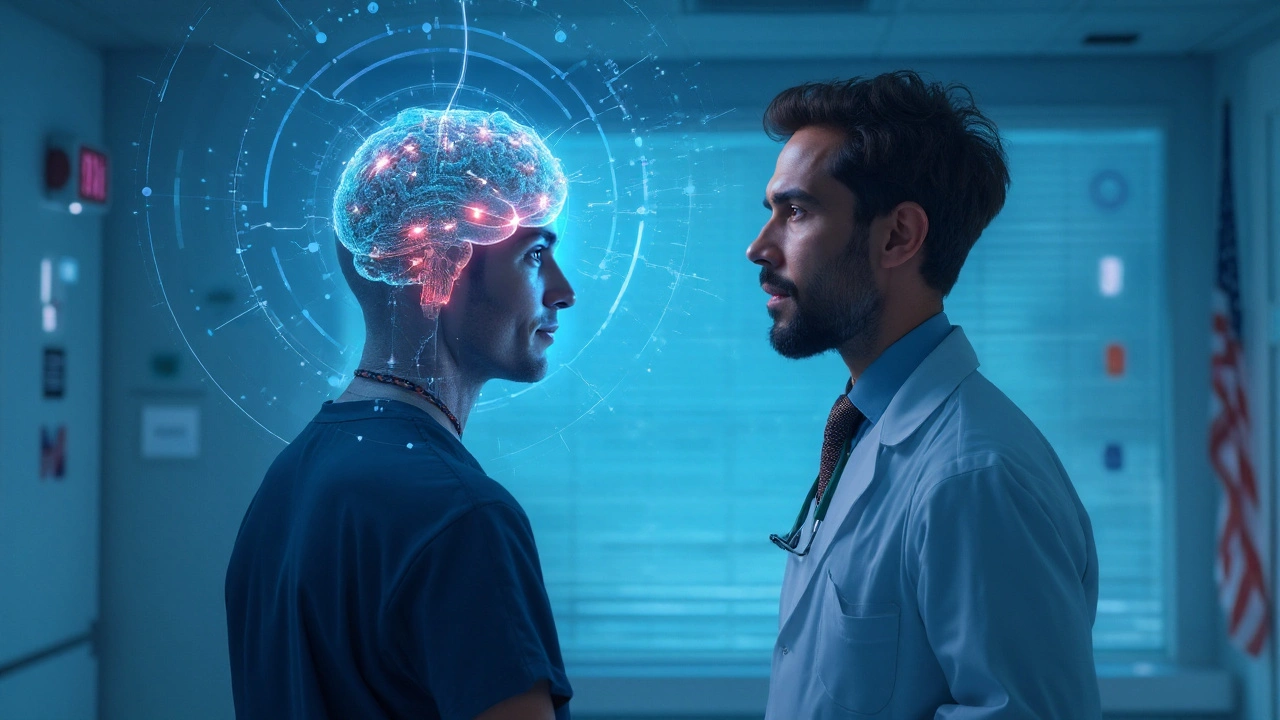Lupus is a systemic autoimmune disease (Systemic Lupus Erythematosus) that can affect skin, kidneys, joints, and the nervous system. When the immune system goes rogue, it can launch attacks on the brain, spinal cord, and peripheral nerves, leading to a bewildering mix of psychiatric, cognitive, and motor problems. Understanding the link between lupus and the nervous system helps patients and clinicians spot red flags early, order the right tests, and choose therapies that prevent permanent damage.
Why the Nervous System Gets Involved
Nervous system is a complex network of brain, spinal cord, and peripheral nerves that coordinates every thought, feeling, and movement. In lupus, two main mechanisms drive damage: autoantibody‑mediated inflammation and vascular injury. Autoantibodies such as anti‑NMDAR, anti‑ribosomal P, and antiphospholipid antibodies cross the blood‑brain barrier is a protective filter that normally blocks harmful substances from entering the brain. When the barrier becomes leaky during a flare, these antibodies reach neurons and glial cells, triggering cytokine storms. Cytokines like IL‑6, TNF‑α, and interferon‑α act as inflammatory messengers that amplify tissue injury and disrupt neurotransmission.
Key Neuropsychiatric Manifestations
Neuropsychiatric lupus (NPSLE) covers over a dozen clinical presentations. The most common include:
- Headache - often tension‑type but can signal intracranial vasculitis.
- Cognitive dysfunction - “lupus fog” affecting memory, attention, and executive function.
- Mood disorders - depression and anxiety affect up to 40% of patients.
- Seizures - both generalized and focal, linked to cortical inflammation.
- Psychosis - rare but serious, may mimic schizophrenia.
- Peripheral neuropathy - tingling, numbness, or burning sensation in hands/feet.
These symptoms often overlap with medication side effects, making accurate diagnosis a challenge.
Diagnosing Nervous System Involvement
Because symptoms are non‑specific, clinicians rely on a blend of clinical criteria, lab tests, and imaging.
- Clinical assessment: detailed neurological exam plus standardized cognitive testing (e.g., MoCA).
- Serology: measurement of autoantibodies is a blood markers that indicate immune aggression against self‑tissues. Elevated anti‑NMDAR or antiphospholipid titers raise suspicion for CNS involvement.
- Neuroimaging: MRI with FLAIR and diffusion‑weighted sequences detects white‑matter lesions, vasculitis, or infarcts. A normal MRI does not rule out NPSLE, but abnormal findings often guide treatment.
MRI Findings in Neuropsychiatric Lupus Finding Typical Location Clinical Correlation White‑matter hyperintensities Periventricular Cognitive fog, headaches Posterior reversible encephalopathy syndrome (PRES) Occipital lobes Seizures, visual disturbances Small infarcts Basal ganglia Movement disorders - CSF analysis: elevated protein, lymphocytic pleocytosis, or intrathecal IgG synthesis can support CNS inflammation.
Combining these tools with the 1999 ACR case definition for NPSLE improves diagnostic confidence.
Treatment Landscape
Therapy aims to quell inflammation, protect neural tissue, and manage symptoms. Choices depend on severity, organ involvement, and patient tolerance.
| Medication | Primary Use | Typical Dose | Main Side Effects |
|---|---|---|---|
| Glucocorticoids | Acute flares | Prednisone 0.5-1mg/kg daily | Weight gain, osteoporosis, mood swings |
| Azathioprine | Maintenance immunosuppression | 2-2.5mg/kg daily | Leukopenia, liver enzymes rise |
| Mycophenolate mofetil | Severe CNS disease | 1-1.5g twice daily | GI upset, infection risk |
| Rituximab | Refractory cases | 1g IV on day0 and 14 | Infusion reactions, hypogammaglobulinemia |
| Hydroxychloroquine | Baseline disease control | 200-400mg daily | Retinal toxicity (rare) |
High‑dose steroids are usually the first line, tapered quickly once other agents take effect. Mycophenolate and rituximab have the strongest evidence for CNS protection, while hydroxychloroquine reduces overall flare risk.

Managing Everyday Symptoms
Even with medication, patients often grapple with fatigue, mood swings, and cognitive lapses. Practical steps include:
- Sleep hygiene: Keep a regular bedtime, limit screens, consider melatonin if insomnia persists.
- Physical activity: Low‑impact aerobic exercise improves circulation and reduces fatigue.
- Cognitive rehab: Brain‑training apps, memory notebooks, and structured routines help counteract “lupus fog.”
- Psychological support: Cognitive‑behavioral therapy (CBT) and peer groups lower depression scores in lupus cohorts.
Nutrition matters too. Omega‑3 fatty acids, antioxidants, and a Mediterranean‑style diet have modest anti‑inflammatory effects, according to a 2023 cohort study from the University of Auckland.
Related Concepts and Next Steps
Understanding neuro‑lupus opens doors to broader topics such as:
- Vascular manifestations of SLE (e.g., antiphospholipid syndrome)
- Kidney‑brain cross‑talk in lupus nephritis
- Emerging biologics targeting interferon pathways
- Pregnancy considerations for women with neuro‑lupus
Readers who master this article may want to explore “Lupus Nephritis Management” or “Living with Chronic Autoimmune Disease” for deeper insights.
When to Seek Immediate Help
Rapid neurological decline warrants urgent evaluation. Call emergency services if you experience:
- Sudden severe headache or visual loss
- New seizures or loss of consciousness
- Rapidly worsening weakness or numbness
- Acute confusion or psychosis
Early intervention can prevent irreversible damage and improve long‑term outcomes.
Frequently Asked Questions
Can lupus cause permanent brain damage?
Yes, severe or untreated neuro‑lupus can lead to lasting lesions, especially if vasculitis causes infarcts. Prompt immunosuppression and control of cardiovascular risk factors greatly reduce this risk.
How is neuro‑lupus different from other autoimmune brain disorders?
Neuro‑lupus is unique because it can arise from a wide range of autoantibodies and often co‑exists with systemic organ involvement. Conditions like multiple sclerosis have distinct demyelinating patterns on MRI, while neuro‑lupus lesions are often more diffuse and linked to vascular inflammation.
Is hydroxychloroquine safe for the brain?
Hydroxychloroquine doesn’t directly treat CNS inflammation, but it lowers overall disease activity and flare frequency, which indirectly protects the brain. Regular eye exams are needed, but there’s no evidence of neurotoxicity.
What lifestyle changes help reduce neuro‑lupus flares?
Avoid smoking, maintain a healthy weight, manage stress with mindfulness or yoga, and stay up‑to‑date on vaccinations. Sun protection is crucial because ultraviolet exposure can trigger systemic flares that later involve the nervous system.
Can pregnancy worsen neuro‑lupus?
Pregnancy can shift immune balance, potentially increasing flare risk. Women planning pregnancy should stabilize disease activity first, keep hydroxychloroquine on board, and work with a rheumatologist‑obstetrician team to monitor neurological signs.
What new drugs are on the horizon for neuro‑lupus?
Targeted interferon‑α inhibitors (e.g., anifrolumab) have shown promise in reducing overall SLE activity, including CNS symptoms, in recent phase‑III trials. Small‑molecule kinase inhibitors are also being explored for their ability to dampen cytokine storms.

